Table of Contents
Definition of Speech-to-Text Tools
Speech-to-text tools, also known as voice recognition software or dictation tools, are advanced technological solutions designed to convert spoken language into written text. These tools utilize complex algorithms and artificial intelligence (AI) to analyze and interpret spoken words, transforming them into accurate and readable text in real-time. By bridging the gap between spoken and written communication, speech-to-text tools provide individuals with disabilities or limitations an effective means of expression and accessibility.
These tools capture audio input, process it through sophisticated speech recognition systems, and generate corresponding written text, empowering users to communicate, create content, and engage with others through written language. With their ability to enhance accessibility and inclusivity, speech-to-text tools have become invaluable resources for individuals with speech impairments, hearing impairments, motor disabilities, dyslexia, and other conditions.

Get a customized offer
Request a quote for Speech-to-Text API
Importance of Speech-to-Text Tools for People with Disabilities
Speech-to-text tools play a crucial role in improving the quality of life for people with disabilities. These tools offer several key benefits that enhance communication, productivity, and independence.
Firstly, speech-to-text tools enable individuals with speech impairments to overcome the limitations imposed by their condition. By converting spoken words into written text, these tools facilitate effective communication, allowing individuals to express their thoughts, needs, and ideas with greater ease and accuracy. This enhanced communication fosters inclusivity and enables individuals to actively participate in conversations, social interactions, and professional environments.
Speech-to-text tools also provide a valuable resource for individuals with hearing impairments. By transcribing spoken words into written text in real-time, these tools allow individuals to read and understand conversations, lectures, or other audio content. This helps bridge the gap between the hearing world and the deaf or hard-of-hearing community, enabling equal access to information and facilitating effective communication.
Tools like this empower individuals with motor disabilities or conditions that affect their ability to type or write. These tools eliminate the physical barriers associated with traditional methods of text input by allowing users to dictate their thoughts verbally. By converting speech into text, individuals can compose documents, emails, or messages without the need for manual typing or writing, thereby improving productivity and efficiency.
How Speech-to-Text Tools Work
Speech-to-text tools utilize a combination of advanced technologies to convert spoken language into written text. The process involves several key steps that enable accurate and real-time transcription of speech.
- Audio Input: The speech-to-text tool begins by capturing audio input, typically through a microphone. The tool then digitizes and processes the audio data, preparing it for further analysis.
- Speech Recognition: The processed audio data is then passed through a speech recognition system. This system uses complex algorithms and machine learning techniques to analyze the audio, identify speech patterns, and convert them into corresponding text. The system is trained on vast amounts of data to recognize and interpret different languages, accents, and speech variations.
- Language Processing: Once the speech is recognized, the tool performs language processing tasks to improve accuracy and readability. This includes tasks such as punctuation insertion, capitalization, and grammar correction.
- Real-Time Transcription: Many speech-to-text tools offer real-time transcription, meaning the converted text is displayed immediately as the user speaks. This feature allows users to see the transcription in real-time, enabling them to make corrections or modifications as needed.
- Post-Processing and Editing: After the speech is transcribed, users have the option to edit, proof read and correct any mistakes.
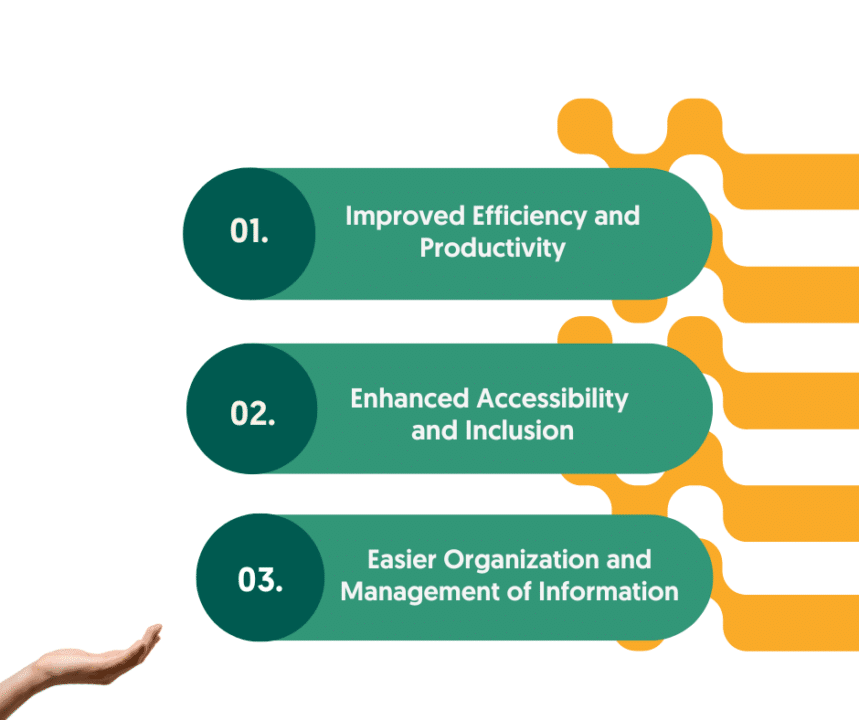
Top Speech-to-Text Tools for People with Disabilities
Amberscript

Amberscript is an excellent speech-to-text tool that provides numerous benefits for individuals with disabilities. With its advanced technology and user-friendly interface, Amberscript offers a reliable and accurate solution for converting spoken language into written text. Here are some key reasons why Amberscript stands out as a top choice for people with disabilities:
- Accuracy and Reliability: Amberscript utilizes state-of-the-art speech recognition algorithms and AI technology, ensuring high accuracy in transcribing spoken words. The tool continuously learns and adapts to individual users’ speech patterns, leading to improved accuracy over time. This reliability is crucial for individuals with disabilities who heavily rely on accurate transcription to communicate effectively.
- User-Friendly Interface: Amberscript features a user-friendly interface that makes it accessible to individuals of varying technological proficiency. The intuitive design allows users to navigate the tool effortlessly, ensuring a smooth and seamless transcription experience. The simplicity of the interface is particularly beneficial for individuals with disabilities who may have specific accessibility needs or limitations.
- Integration Options: Amberscript offers flexible integration options, allowing users to incorporate the tool into their preferred devices or software. Whether it’s integrating with popular transcription software, word processors, or assistive technologies, Amberscript ensures compatibility and ease of use, catering to the diverse needs of individuals with disabilities.
- Accessibility Features: Amberscript recognizes the importance of accessibility and offers features to support individuals with disabilities. This includes customizable settings for font size, color contrast, and keyboard shortcuts, accommodating users with visual impairments or motor disabilities. By prioritizing accessibility, Amberscript ensures an inclusive and user-centric experience for all users.
- Positive User Feedback: Amberscript has received positive feedback from users, including individuals with disabilities. Testimonials and success stories highlight the tool’s effectiveness in improving communication, productivity, and accessibility for users with diverse needs. Such feedback further solidifies Amberscript’s reputation as a reliable and valuable speech-to-text tool for individuals with disabilities.
Dragon NaturallySpeaking
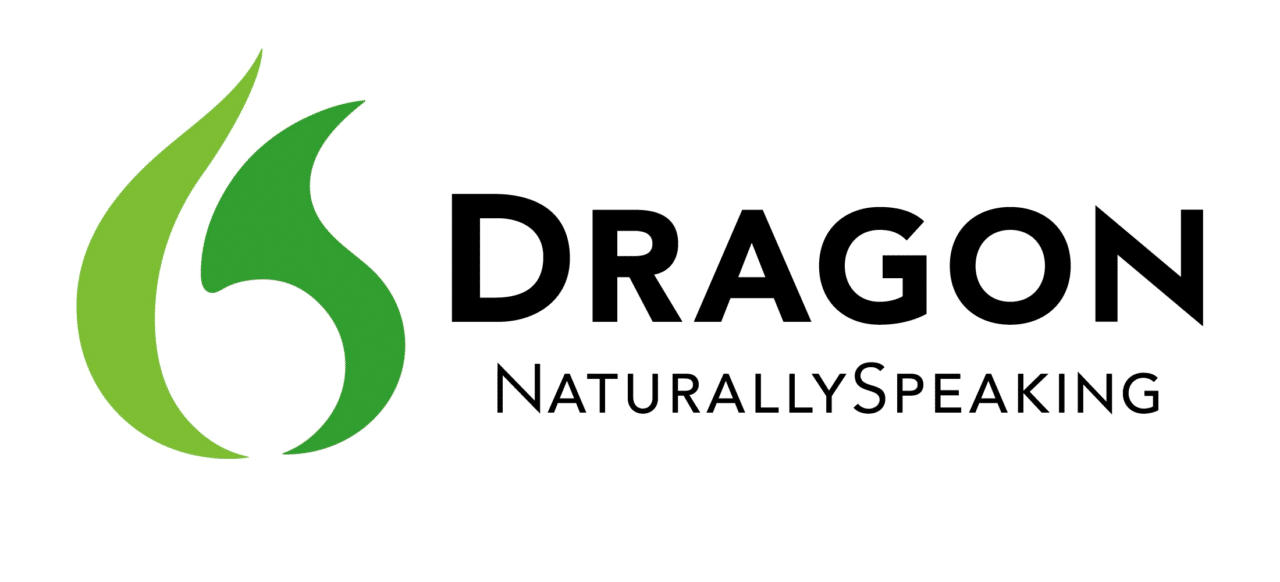
Dragon NaturallySpeaking, developed by Nuance, is a highly regarded speech-to-text tool that offers numerous advantages for individuals with disabilities. Here are key reasons why Dragon NaturallySpeaking stands out as an excellent choice for people with disabilities:
- Exceptional Accuracy: Dragon NaturallySpeaking boasts industry-leading accuracy in speech recognition. The software utilizes advanced algorithms and deep learning technology to consistently deliver highly accurate transcriptions. This level of precision is crucial for individuals with disabilities who rely on accurate speech-to-text conversion to effectively communicate and express themselves.
- Customization and Personalization: Dragon NaturallySpeaking provides extensive customization options, allowing users to tailor the tool to their specific needs and preferences. Users can create custom vocabularies, add specialized terminology, and adapt the software to their unique speech patterns. This flexibility ensures that individuals with disabilities, who may have specific speech characteristics or specialized terminology, can achieve optimal accuracy and recognition.
- Wide Range of Applications: Dragon NaturallySpeaking offers seamless integration with various software and applications, including popular word processors, email clients, and web browsers. This versatility enables individuals with disabilities to use the tool across multiple platforms and perform tasks such as writing documents, composing emails, or browsing the internet, with ease and efficiency.
- Accessibility Features: Dragon NaturallySpeaking prioritizes accessibility, catering to the needs of users with disabilities. The software supports various assistive technologies, offering compatibility with alternative input devices, switch scanning, and other accessibility tools. This inclusive approach ensures that individuals with motor disabilities or other limitations can fully utilize the software and overcome barriers to communication and productivity.
Otter.ai
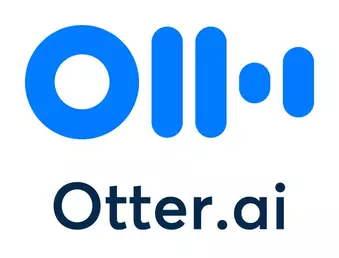
Otter.ai is an exceptional speech-to-text tool that offers a range of benefits for individuals with disabilities. Designed to provide accurate and real-time transcription, Otter.ai stands out as a valuable resource for enhancing communication, accessibility, and productivity. Here are key reasons why Otter.ai is an excellent choice for people with disabilities:
- Real-Time Transcription: Otter.ai excels in providing real-time transcription capabilities, enabling users to see the converted text as they speak. This immediate feedback allows individuals with disabilities to review and make corrections or modifications in real-time, ensuring accurate and effective communication.
- Accurate Speech Recognition: Otter.ai employs advanced speech recognition technology to deliver accurate transcriptions. The tool is constantly updated and refined to improve accuracy and adapt to different accents, languages, and speech patterns. This level of accuracy is crucial for individuals with disabilities who rely on precise transcriptions for effective communication and understanding.
- User-Friendly Interface: Otter.ai features a user-friendly interface that is intuitive and easy to navigate. The tool offers a clean and straightforward design, making it accessible to users of varying technological abilities. This simplicity is particularly beneficial for individuals with disabilities who may require a user-friendly interface to enhance usability and accessibility.
- Collaboration and Integration: Otter.ai facilitates collaboration by allowing users to share transcriptions with others in real-time. This feature promotes inclusive communication, enabling individuals with disabilities to actively participate in group discussions, meetings, or educational settings. Otter.ai also offers integration options with popular productivity tools, making it seamless for users to incorporate transcriptions into their workflows.
- Accessibility Features: Otter.ai recognizes the importance of accessibility and provides features to support individuals with disabilities. This includes customizable settings for font size, color contrast, and compatibility with assistive technologies. These accessibility features ensure that individuals with visual impairments or other disabilities can comfortably access and utilize the tool.
Google Gboard
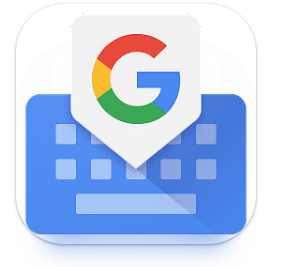
Google Gboard, with its integrated speech-to-text capabilities, serves as a highly effective tool for individuals with disabilities. It offers a range of features and benefits that enhance accessibility, communication, and ease of use. Here’s why Google Gboard stands out as a good speech-to-text tool for people with disabilities:
- Voice Typing: Google Gboard includes a powerful voice typing feature that allows users to dictate text in various applications. With a simple tap on the microphone icon, users can speak naturally, and Gboard converts their speech into written text in real-time. This feature eliminates the need for manual typing, making it particularly beneficial for individuals with motor disabilities or conditions that affect typing speed or accuracy.
- Accuracy and Language Support: Google Gboard leverages Google’s advanced speech recognition technology, resulting in high accuracy in transcriptions. It supports a wide range of languages and dialects, ensuring that individuals with diverse linguistic backgrounds or speech patterns can effectively communicate using their preferred language.
- Multilingual Support: Google Gboard offers multilingual support, allowing users to switch between multiple languages seamlessly. This feature benefits individuals who are bilingual or multilingual, ensuring that they can dictate text in different languages without needing to switch between different input methods or apps.
- Integration with Accessibility Features: Gboard integrates with various accessibility features available on Android and iOS devices. It supports switch access and external keyboards, enabling individuals with motor disabilities to utilize alternative input methods. Gboard also integrates with screen readers, providing auditory feedback for individuals with visual impairments.
- Customization and Personalization: Google Gboard offers customization options to suit individual preferences. Users can adjust settings such as keyboard layout, key size, and gesture typing sensitivity to optimize their typing experience. This flexibility ensures that individuals with disabilities can adapt Gboard to their specific needs, enhancing their overall usability and accessibility.
Windows 10 Speech Recognition
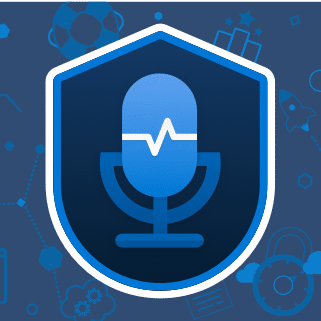
Windows 10 Speech Recognition offers a robust and accessible speech-to-text solution, making it a valuable tool for individuals with disabilities. Here are several reasons why Windows 10 Speech Recognition stands out as an excellent option for people with disabilities:
- Native Integration: Windows 10 Speech Recognition is built directly into the operating system, providing seamless integration and accessibility for users. This native integration eliminates the need for additional software installation and ensures compatibility with various applications and programs on the Windows platform.
- Accessibility Features: Windows 10 Speech Recognition is designed with accessibility in mind. It offers a range of features that cater to individuals with disabilities, including voice commands for hands-free operation, customizable speech recognition settings, and compatibility with assistive technologies such as screen readers and alternative input devices.
- Accuracy and Language Support: Windows 10 Speech Recognition utilizes advanced speech recognition technology, resulting in accurate and reliable transcriptions. It supports multiple languages and dialects, enabling individuals with diverse linguistic backgrounds or speech patterns to communicate effectively using their preferred language.
- System-wide Functionality: Windows 10 Speech Recognition works seamlessly across the entire operating system, allowing users to dictate text in various applications, text editors, web browsers, and more. This system-wide functionality ensures that individuals with disabilities can access and utilize speech-to-text capabilities in their daily activities, whether it’s writing documents, composing emails, or browsing the internet.
Encouragement to explore and try different speech-to-text options
Speech-to-text tools are of paramount importance for people with disabilities as they enhance communication, foster inclusivity, and promote independence. These tools enable individuals to overcome barriers imposed by their disabilities, providing them with the means to express themselves, access information, and participate fully in various aspects of life.
The advent of cutting-edge speech-to-text tools such as Amberscript, Dragon NaturallySpeaking, Otter.ai, Google Gboard, Windows 10 Speech Recognition, and Microsoft or Apple Dictate has significantly expanded the possibilities for individuals with disabilities. These tools boast user-friendly interfaces, robust features, and seamless integration with other software and devices, further enhancing their effectiveness and usability.
In conclusion, when it comes to speech-to-text tools for people with disabilities, Amberscript truly shines. With its accuracy, user-friendly interface, integration options, and positive user feedback, it’s a reliable and valuable solution. Whether you need to transcribe lectures, create written content, or communicate more effectively, Amberscript has got you covered.
Experience the power of Amberscript for yourself and unlock a world of accessibility and inclusivity. Start using Amberscript today and discover the transformative impact it can have on your transcription needs. Empower your voice, break down barriers, and embrace a new level of communication with Amberscript!
Our services are
5x average time saving by using AI.
Enabling an accurate flow of audio-to-data, adjustable in our easy to use online text editor.
GDPR compliant security and safety.


